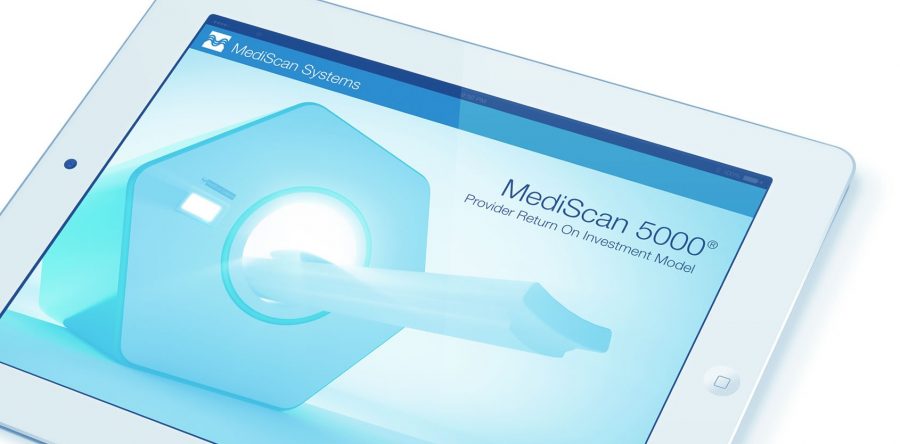
Over the last 2 decades there have been many changes in how pharma and medical device manufacturers engage with stakeholders in the field, in terms of content, technology and the method of managing remote materials. Having spent 20 years as a digital developer and I.T manager within market access, I have witnessed this evolution and the influencing factors first-hand.
Throughout my career field-based communication has moved from paper-based detail aids used in discussions with GPs to Interactive Visual Aids (IVA) and health economic iPad apps for payer engagement. The rise in Payer influence (early 2000’s) and the increasing pressure on healthcare budgets worldwide has made the demonstration of product value an essential part of communication on the road to reimbursement. While value messaging can be developed and delivered digitally as IVAs, the ability to quantify the financial impact of product adoption and tailor a presentation for a given health economy or individual payer is not possible. Creating a Budget Impact Model (see definition here) seemed to be the answer and soon key account managers were armed with spreadsheets. It wasn’t long before health economic tools went digital.
Fast-forward….
The latest digital trend in the life science industry is the increased adoption of integrated content management, customer relationship and closed loop marketing systems (CRM, CMS, & CLM). While these systems have existed in some guise for a few years they were developed as standalone solutions which did not talk well to each other. Today there are a few main players offering an end-to-end solution with Veeva emerging as the major player (the latest masterstroke being the acquisition of Zinc, a widely used regulatory and approval system). Initially developed for account management and distribution of interactive visual aids the initial offering did not consider the increased need for dynamic health economic apps. So with many pharma and medical technology organisations migrating to Veeva (and other platforms) and defining corporate policy that all field-based materials must be Veeva compliant, market access and HEOR teams must be left asking “what about our iPad health economic apps?”
The need for CMS, CRM & CLM
In the mid 90’s, before remote enterprise distribution systems were fully adopted by the industry “installation day” was always a pain. I remember on many occasions frantically running around a sea of bulky laptops clutching my installation discs accompanied by onsite I.T to login with admin rights so that I could install a “multi-media” presentation (crammed with Hollywood effects) in preparation for the quarterly sales conference roll-out the next day. Over time various content management systems and distribution vehicles emerged to tackle this problem but just as it seemed that the method of deployment, version control and approval was sorted, developments in mobile technology changed everything.
To cut a long story short, sales reps love iPads (instant on, light and great for impromptu presentations) and enterprises saw the potential in a lower cost alternative to laptops). Apple CEO Tim Cook, announced ahead of the 3rd generation iPad launch in 2013 that “94 percent of the Fortune 500 and 75 percent of the Global 500 are either testing or deploying the iPad”. Again, this left the life sciences I.T administrators searching for a suitable platform for content management and distribution that catered for laptop and mobile devices/iPads. Area sales managers also had their share of frustrations, customer details and sales information was readily available but identifying the influencing factors behind sales trends could only be gathered via verbal feedback from sales teams. It was difficult to understand how materials had been received in the field, share successful engagements or even gauge how many presentations had been made for a given customer or geographic area.
By successfully combining CMS (capable of deploying to multiple platforms) and CLM which was rooted to the Salesforce customer relationship management system Veeva were perfectly placed to solve a lot of problems and quickly gained traction.
Health economic iPad apps and Veeva
As a developer with 20 years’ experience within a market access consultancy I am no stranger to developing iPad budget impact models and I have encountered many organisations who have adopted the Veeva platform. However, I have routinely been told by our client’s I.T admin that Veeva is for the “sales team” and traditional IVAs, with Health economic apps deployed to market access teams outside of the Veeva platform. Largely I believe this is due to a misconception that the Veeva environment would restrict the functionality required to house Health economic apps. Admittedly, for quite some time I also shared the same concerns. In order to facilitate the hosting of digital HE apps on both laptops and iPads or other tablets my development team and organisation have always developed the core app framework in HTML5, so I knew the main user input and calculation chain “should” work within the Veeva environment. However, I still had concerns around other functionality we include in our HE tools as default such as, saving/opening scenarios and generating dynamic business case reports. After taking the plunge and becoming a certified Veeva agency partner I couldn’t wait to get my hands on the sandbox with a pre-developed budget impact model and discover for myself what was possible.
Just like any other new technology or platform that I have encountered over the years, the first attempt was frustrating, the environment is still very much geared up to make life very easy for presentation materials, but with the help of our Veeva program manager and the Veeva product team we found a way around the issues.
That’s what developers do, they find a way.
Definition of Budget Impact Model
From a market access perspective, a budget impact model is typically used to demonstrate the financial, and sometimes clinical, impact associated with the adoption of a change in health-care interventions over a defined period of time. The changes may be a change in prescribing, a change in clinical practice or most often, the introduction of a new product.


